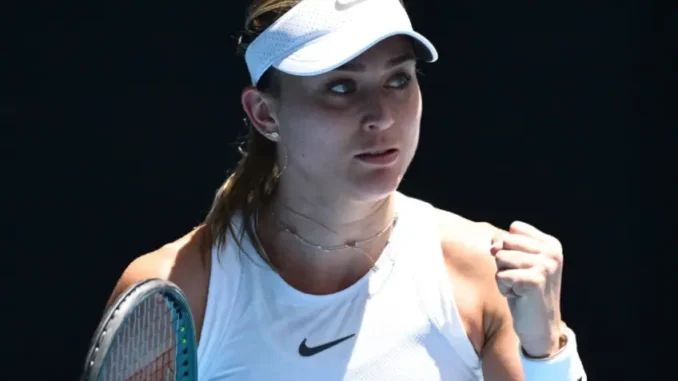
In the world of professional tennis, where physical and mental fortitude are tested daily, Paula Badosa’s recent announcement has struck a chord with fans and fellow athletes alike. On July 14, 2025, the Spanish tennis star revealed she is facing a significant setback due to a psoas muscle tear sustained before Wimbledon, forcing her to step away from competition for several weeks. The news, shared via a poignant post on social media, was followed a day later by a deeply emotional message that showcased her vulnerability, strength, and unwavering determination to fight through adversity. Badosa’s words have resonated far beyond the court, offering a glimpse into the human side of a sport often defined by its glamour and intensity.
The psoas injury, a tear in the muscle connecting the spine to the femur, is a devastating blow for Badosa, who has already endured a career marked by persistent physical challenges. At 27, the former world No. 2 has battled injuries that have disrupted her momentum since her breakout 2021 season, where she reached the French Open quarterfinals and won her first WTA titles. This latest setback, which she described as happening “before Wimbledon,” adds to a history of struggles that have tested her resilience. In a raw and emotional interview earlier this year, Badosa opened up about the chronic pain she lives with, admitting, “I know that I am going to retire young.” The weight of that reality, coupled with her latest injury, paints a picture of an athlete grappling with both physical limitations and the emotional toll of a career under constant threat.
Despite the grim prognosis, Badosa’s message on July 15, 2025, was a beacon of hope and defiance. “I’m going through really tough times,” she wrote in Spanish, addressing her fans directly. “Sometimes everything feels like a tunnel with no way out… but if there’s one thing I’ve always shown, it’s that I never stop fighting.” Her words capture the essence of her journey—a relentless refusal to surrender, even when faced with what she described as “complicated times.” She expressed optimism, adding, “I still have hope that things will get better soon and that the light at the end of the tunnel will start to shine.” This message, shared with her global fanbase, underscores her ability to find strength in vulnerability, a quality that has endeared her to many.
Badosa’s openness about her struggles has sparked an outpouring of support from the tennis community and beyond. Fans on social media have rallied behind her, praising her courage and authenticity. Her message resonates in an era where athletes are increasingly vocal about the mental and physical challenges of elite competition. The psoas injury, while serious, is not expected to sideline her for the entire season, with recovery estimates suggesting a return in a matter of weeks. However, the uncertainty of her condition, combined with her history of injuries, raises questions about her long-term future in the sport. Badosa has previously acknowledged the possibility of an early retirement, a prospect that looms larger with each new setback. Yet, her determination to keep pushing forward suggests she is far from ready to step away.
The timing of this injury is particularly cruel, as Badosa had shown signs of rediscovering her form in 2025. After a challenging 2024, she entered the year with renewed focus, climbing back into the top 20 and delivering competitive performances against top players. Her aggressive baseline game and fiery on-court presence have made her a fan favorite, but injuries have repeatedly derailed her progress. The psoas tear, a notoriously tricky injury for athletes due to its role in core stability and movement, could disrupt her preparations for the upcoming hard-court season, including the US Open. Still, Badosa’s message suggests she is already looking beyond the immediate pain, focusing on recovery and a return to the court.
Her story is a reminder of the fragility of a professional athlete’s career, where a single injury can alter the trajectory of even the most talented players. Badosa’s willingness to share her struggles publicly, however, sets her apart. By admitting that “everything feels like a tunnel with no way out,” she humanizes the often-glorified life of a tennis star, inviting fans to see the person behind the player. Her hope for “the light at the end of the tunnel” reflects a mindset that has carried her through previous challenges, from stress fractures to chronic back issues.
As Badosa begins her recovery, the tennis world watches with bated breath, hoping to see her return to the court with the same passion that has defined her career. Her message of resilience serves as an inspiration, not just to aspiring athletes but to anyone facing their own dark tunnels. For now, Badosa’s fight continues, fueled by a belief that the light she seeks is not just a distant dream but a destination she will reach through sheer determination.
Leave a Reply